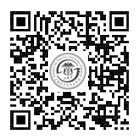From February 28 to March 2, 2025, the inaugural“Belt and Road” Eye Health Forum, the Shanghai Ophthalmology Forum, the 16th Shanghai Jiao Tong University Ophthalmology Forum, and the 5th International Forum on Thyroid Eye Disease were grandly held at the Shanghai International Convention Center. Jointly organized by theShanghai Medical Doctor Association, the Department of Ophthalmology of the Ninth People’s Hospital Affiliated with Shanghai Jiao Tong University School of Medicine, and the Ophthalmology Branch of the Shanghai Medical Doctor Association, the event attracted experts and scholars from 14 countries and regions including the United States, Germany, and Singapore. A total of 216 ophthalmology experts delivered lectures or participated in discussions, with more than 1,000 registered attendees, fully demonstrating the forum’s academic influence and appeal. During the forum, theBelt and Road Ophthalmic Alliance for Development (BROAD) was officially established, encompassing 93 member institutions from 25 countries and regions worldwide. The alliance aims to foster global exchange and cooperation in eye health, and promote the sharing of medical resources and expertise.
Advancing Multilateral Collaboration for a New Chapter in Global Eye Health
At the opening ceremony, distinguished guests in attendance included Academician Ding Kuiling of the Chinese Academy of Sciences and President of Shanghai Jiao Tong University; Xu Jianguang, Director of the Education, Science, Culture and Health Committee of the Shanghai Municipal People’s Congress and President of the Shanghai Medical Doctor Association; Huang Hong, Deputy Director of the Science and Technology Commission of Shanghai Municipality; Academician Xie Lixin of the Chinese Academy of Engineering and Qingdao Eye Hospital of Shandong First Medical University; Academician Yang Zhenglin of the Chinese Academy of Sciences and President of Sichuan Provincial People’s Hospital; Academician Fan Xianqun of the Chinese Academy of Engineering andChancellor of Shanghai Jiao Tong University School of Medicine; Xia Xueshan, President of Kunming Medical University; Zheng Lanrong, President of Bengbu Medical University; Chen Ning, Member of the Administrative Committee of the National Innovation Center par Excellence and Vice President of Jiangsu Industrial Technology Research Institute; and Ma Yanbin, Party Secretary of the Shanghai Ninth People’s Hospital, Shanghai Jiao Tong University School of Medicine
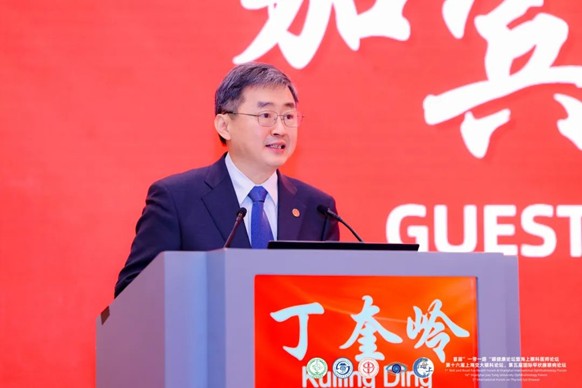
On behalf of Shanghai Jiao Tong University, President Ding Kuiling delivered a speech at the conference. He emphasized that a steadfast commitment to“serving the health and well-being of the people” has always been the guiding direction for the university’s scientific and technological development, and a historic responsibility for scientists and medical professionals alike. Since the strong integration of the university and its medical school 20 years ago, close collaboration among the university, the medical school, and affiliated hospitals has leveraged disciplinary strengths to create a synergistic momentum, successfully forging the“SJTUSM Model” —a distinctive model for developing medical education within a comprehensive university. In recent years, the university has aligned closely with the Healthy China Initative, breaking down disciplinary boundaries and advancing the“Medicine + X” interdisciplinary model. This approach promotes deep integration between medicine and disciplines such as science, engineering, life sciences, agriculture, humanities, and management, significantly enhancing global influence in medical scientific innovation and critical technology development. Ding expressed his delight in seeing the Department of Ophthalmology at the Shanghai Ninth People’s Hospital, among others, actively engaging in Belt and Road cooperation, embodying China’s transition in healthcare from a follower to a leader. He expressed his sincere hope that this forum will serve as a bridge, enabling research in medicine and ophthalmology to illuminate a brighter future through openness and collaboration under the Belt and Road framework.
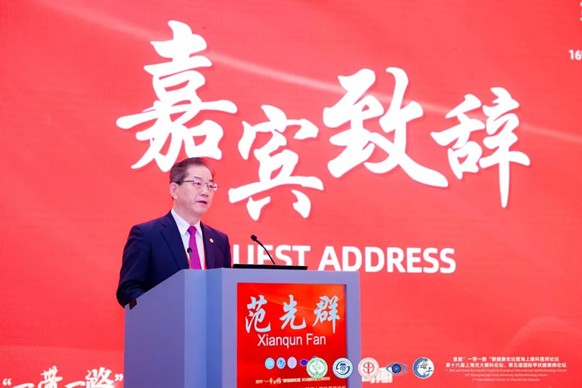
As Chair of the BROAD, Fan Xianqun delivered a speach at the opening ceremony. He warmly welcomed all attending leaders and experts, and expressed heartfelt thanks for their strong support in establishing the Alliance. Fan emphasized that eye health is a matter of global concern, impacting people across all life stages and bearing significance for national strategies, public health, and the well-being of populations worldwide. The Alliance, he noted, was established to strengthen international exchange, foster clinical and basic research collaboration, share the latest advances in ophthalmology, and support the training of young physicians—all in pursuit of advancing global eye care. He outlined the Alliance’s commitment to hosting regular forums, and organizing comprehensive initiatives spanning healthcare, education, research, translational medicine, and public outreach, particularly among Belt and Road countries and beyond. By doing so, the Alliance aims to build a sustainable global eye health service system and promote equitable access to eye care technologies, contributing to the building of a global community of shared future for eye health. Fan concluded by stressing that, through the integration of global expertise and innovation, the Alliance will help overcome challenges in the prevention and treatment of complex eye diseases and drive transformative progress in global eye health—ensuring a brighter future for all.
Additional remarks were delivered by key figures such as Ma Yanbin, Yao Ke, President of the Chinese Ophthalmological Society, Fellow of the Academia Ophthalmologica Internationalis,Chief of Eye Institute of Zhejiang University;Dennis Lam Shun-chiu, Director of the Chinese University of Hong Kong (Shenzhen) International Eye Research Institute; and Huang Hong, Xu Jianguang and others.
The forum invited 216 renowned ophthalmology experts from China and abroad, including academicians from the Chinese Academy of Sciences and the Chinese Academy of Engineering, to give lectures, deliver speeches, and participate in discussions.
“5C” Collaboration Framework: Building a New Bridge for Global Eye Health
Eye health is a vital component of global health. Under the framework of the BRI, China has initiated preliminary collaborations with countries and regions along the Belt and Road in the field of ophthalmology. However, the prevention and treatment of complex eye diseases remain a significant challenge, calling for an innovative model of international cooperation in eye health. In response to shared global needs, the Department of Ophthalmology at Shanghai Ninth People’s Hospital initiated the BROAD. The alliance seeks to establish the“5C” collaboration framework, built around five key pillars: Complex Eye Disease Management, Collaborative Ophthalmic Research, Cutting-edge Equipment Development, Comprehensive Health Promotion, and Cultivating Junior Ophthalmologists.
A preparatory meeting held prior to the forum elected the alliance’s executive committee, with Fan Xianqun serving as its inaugural Chairman. The executive committee includes 11 founding member institutions from China (including Hong Kong SAR), Singapore, Thailand, Malaysia, and Mongolia. Looking ahead, the alliance will focus on BRI countries and regions, as well as global eye health. It will host regular forums and facilitate cooperation across medical practice, education, research, technology translation, and public outreach, contributing to a sustainable global eye health system.
Three Highlights: Enhancing the Global Reach ofShanghaiJiao Tong University School of Medicine
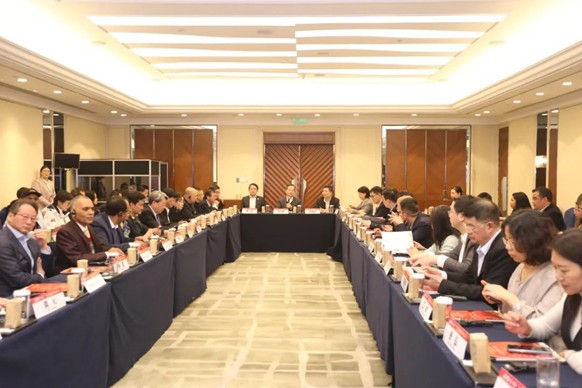
BROAD: The Belt and Road Ophthalmic Alliance for Development was officially launched at the forum, with 93 institutions from 25 countries and regions, including BRI countries such as Thailand, Malaysia, Poland, Brazil, and eye care organizations academic institutions from the UK, Germany, and others. The Alliance will hold an annual Belt and Road Eye Health Forum and organize activities to promote eye health exchanges and cooperation. Its goal is to improve eye health services in BRI countries and foster collaboration and development between China and these nations.
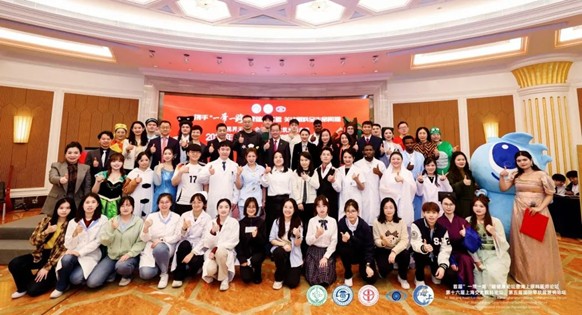
International Ophthalmology Science Popularization Competition: Under the theme“Vision Without Borders: Youth for a Brighter Future”, the competition attracted nearly 50 teams of young ophthalmologists from around the world, with 10 teams reaching the finals. This initiative showcased the creativity and academic spirit of a new generation, and fostered intercultural exchange and collaboration among emerging medical professionals.
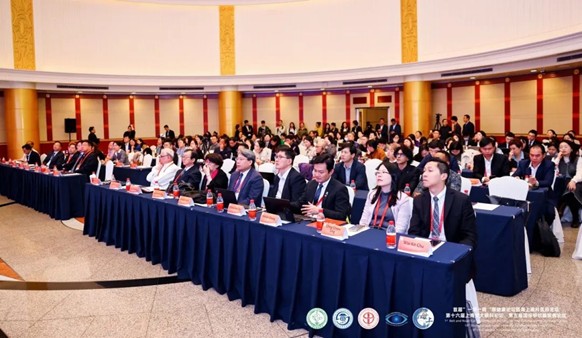
International Forum on Thyroid Eye Disease: Featuring leading experts from the US, Germany, Singapore, and China (including Hong Kong), the forum highlighted advances in targeted therapies, surgical innovations, and multidisciplinary collaboration. It also unveiled the results of China’s first Phase III clinical trial of an IGF-1R monoclonal antibody for thyroid eye disease and facilitated consensus-building on its pharmacological management.
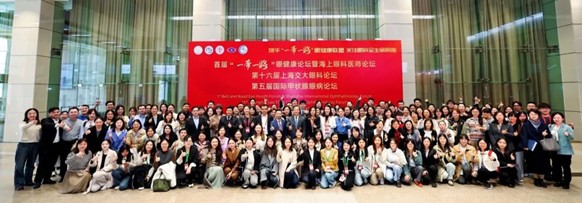
Shanghai Jiao Tong University School of Medicine remains committed to aligning with national and regional development strategies. Guided by the goal of addressing major scientific challenges and improving the prevention and treatment of serious diseases, the university builds international cooperation and exchange platforms to carry out organized scientific research, drive major scientific and technological innovation, and produce world-class research outcomes. These efforts contribute to advancing global health and support China’s goals of becoming a leader in education, science and technology, talent development, and national health.
